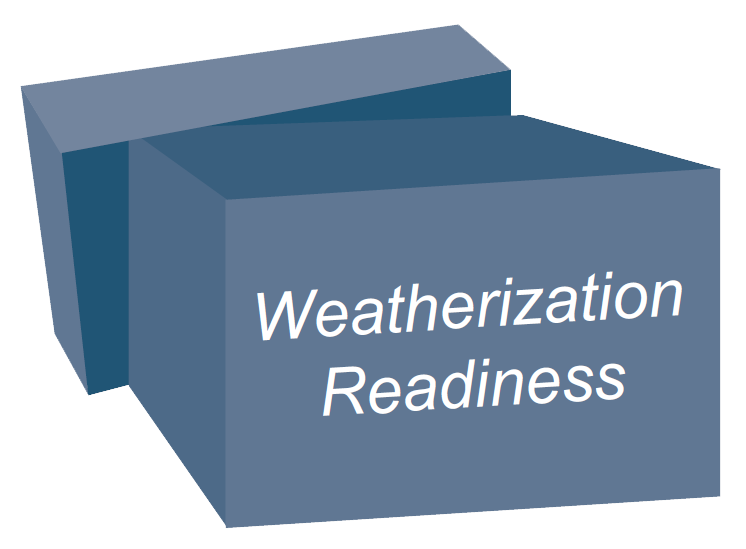This Program In a Box suggests ways State Energy Offices might increase the readiness of residential buildings for energy efficiency improvements provided by the Weatherization Assistance Program (WAP). Nationally, 10-30% of potential income-eligible weatherization clients are deferred due to problems that must be addressed before measures can be safely installed. Issues include the presence of asbestos insulation, outdated wiring, mold, improper combustion venting, structural concerns, and other health and safety hazards.
Benefits for States that Develop a Weatherization Readiness Program
- Increased participation of low-income households in weatherization programs advances energy equity goals and reduces energy burdens, helping to ensure that all qualified residents benefit from energy efficiency investments.
- Progress toward public health goals is furthered by addressing serious health and safety issues often found in older residential building stock.
- Achieving state energy goals through increased energy efficiency and resilience is made more possible with a readiness program in place.
- Programs that address weatherization readiness often draw from multiple funding sources, which can help reduce “silos,” increasing cooperation and coordination across agencies.
How Communities Benefit from Weatherization Readiness Investments
- Programs increase access to capital for home improvements, while reducing energy burdens for vulnerable communities.
- Improved public health outcomes result from better indoor air quality; increased safety means fewer first responder calls.
- Oversight of QA/QC to assure that work performed by qualified contractors meets the requirements of State Energy Office standards.
Examples Used to Develop This Program In a Box
Thank you to Connecticut and Minnesota professionals who generously shared their knowledge and experiences for this Weatherization Readiness Program In a Box.
Staff at the Connecticut Department of Energy and Environmental Protection (DEEP) provided information on the Residential Energy Preparation Services (REPS) program .
The program was established to address high deferral rates for households that wanted to participate in the Weatherization Assistance Program (WAP). Based on the rate of deferrals, Connecticut calculated that over 60,000 income-eligible homes likely needed health and safety remediation. DEEP held stakeholder meetings to gather data from utilities, regulators, and advocates to solicit input on program design.
DEEP then identified funding sources to support the program, deciding to use resources from the federal Low-Income Heating Assistance Program (LIHEAP), and some from the State Energy Program (SEP). The governor and state legislature also allocated resources from the 2021 American Rescue Plan (ARPA). A third-party administrator was selected for the program in 2022. Upon launch, it became known as Residential Energy Preparation Services (REPS) .
Staff at Minnesota’s energy office, the Minnesota Department of Commerce, provided information on the Minnesota Healthy AIR Program.
The Energy and Conservation Act of 2021 expanded utilities’ authority to spend money for low-income efficiency programs for pre-weatherization building improvements. Specifically, the statute set up an account, Healthy AIR (Asbestos Insulation Remediation) with the state treasury for utilities to contribute to as a way to satisfy their requirement to support low-income energy efficiency programs. The program was set up to fund removal of vermiculate-based insulation from attics.
Implementation of the Healthy AIR Program was administered by the Department of Commerce, which oversees the spending of federal WAP funds in the state.
Since establishing the Healthy AIR fund, Minnesota has expanded weatherization services using federal funding to address broader issues prior to weatherization. This specific program is highlighted here because it targets a specific health issue.

